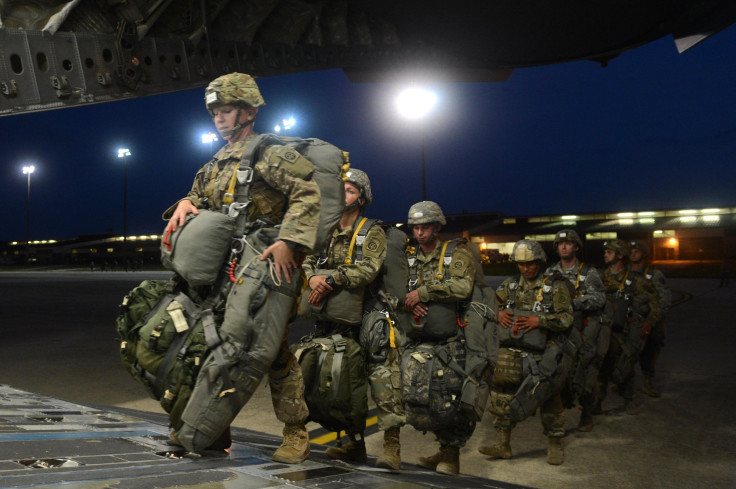Troops From 82 Airborne On Way To Kuwait After Embassy Attack In Baghdad

KEY POINTS
- The U.S. has deployed more than 500 troops of 82 Airborne Division to Kuwait
- 4,000 more may be on the way
- Protesters still inside Baghdad embassy compound
The Trump administration is rushing about 700 paratroopers from the 82nd Airborne Division to Kuwait to bolster the U.S. military presence in the Middle East, following Tuesday's attack by Iran-backed protesters on the U.S. embassy compound in Baghdad.
Sources in the military told International Business Times that the troops, based out of Fort Bragg, North Carolina, are already on the way and expected to reach Kuwait on Wednesday.
It has been more than 24 hours since the protesters broke into the embassy compound, set fire to the reception area and painted graffiti on the walls of the building. They have since remained inside the compound even as the government in Baghdad has shown reluctance to use force to disperse them.
Defense Secretary Mark Esper confirmed the troop deployment in a statement later Tuesday: "At the direction of the Commander in Chief, I have authorized the deployment of an infantry battalion from the Immediate Response Force of the 82nd Airborne Division (in Fort Bragg, North Carolina) to the U.S. Central Command area of operations in response to recent events in Iraq." He said additional forces "are prepared to deploy over the next several days."
Two Apache helicopters flew over the embassy earlier Tuesday in a show of force and about 100 U.S. Marines based in Kuwait flew into the embassy compound on board MV-22 Osprey aircraft to bolster security there.
The additional deployment to Kuwait is to avoid the situation from escalating and to protect civilian lives. The protesters include members of a militia backed by neighboring Iran, accused of firing rockets at a U.S. military base Saturday that killed an American contractor.
A source within the special operations community told International Business Times that they are prepared to handle the immediate measures necessary to address the situation. But having extra troops in the vicinity along with the rest of the military assets available to the U.S. government is a safety precaution at this time.
When tensions began to escalate between the U.S. and Iran earlier this month, a plan was drawn up to deploy up to 4,000 new troops to the general area. Given the current situation, the U.S. government is getting ready to send in those troops too.
The State Department said Tuesday no one was hurt when protesters stormed the embassy. "Our first priority is the safety and security of US personnel," a State Department spokesperson said in a statement.
The embassy building is on lockdown with all the staff still inside. Some 100 U.S. Marines were deployed to the embassy from Kuwait to assist, along with two Apache helicopters from the U.S. Army, but that does not seem to be enough.
"U.S. personnel are secure and there has been no breach," the spokesperson said. "There are no plans to evacuate Embassy Baghdad."
The spokesperson said U.S. Ambassador Matt Tueller was not at the embassy at the time of the attack."
The protesters stormed the embassy in Baghdad's high-security Green Zone after funerals for some of the 25 members of an Iranain-backed militia killed in U.S. air strikes carried out in retaliation for the attack on the base.
The government in Baghdad, caught between the demands of the Trump administraton and the pressure exerted by Iran through its proxies, had initially called those killed in the attack martyrs.
Unlike the cofused actions of the Obama administration during 2012 when members of a militia stormed the U.S. diplomatic compound in Benghazi, Libya, President Trump is taking immediate and decisive action. Trump has already said he expects the Iraqi government to use its forces to protecte the U.S. embassy staff.
On Tuesday he that Iran "will pay a very big price" for any damage or loss of life at the Baghdad embassy. "This is not a warning, it is a threat," he said.
© Copyright IBTimes 2025. All rights reserved.





















